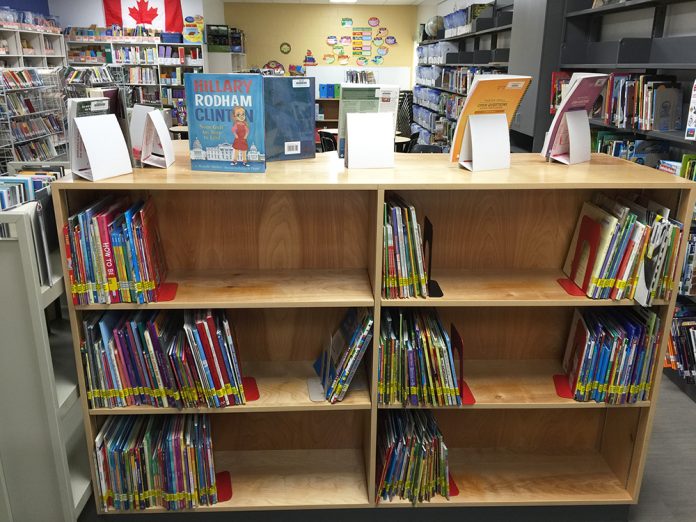It’s hard to get King George Public School librarian Corinne Bantle to say anything bad about books. But she’ll admit that some of her resources are a little bit dated.
“There’s like a lot of really old and tattered titles that need to be replaced,” she said. “Some of those books are out of print.”
Some are several decades old, like Make Way for Ducklings by Robert McCloskey. “It’s an oldie but a goodie,” she said. But if Bantle could get the latest titles of, say, Pete the Cat, she could get even more students into reading.
“Pete the Cat is huge in libraries, huge,” she said. “They don’t sit on the shelves.”
The Indigo Adopt a School program is stepping in to help Bantle modernize her library. They’ll solicit donations from staff and customers at the local Coles until October 8. The Indigo Love of Reading Foundation will also match money raised online – up to a maximum of $1,200. The donations will go to pay for books at a 30 per cent discount.
The program is targeted at schools in “high-needs communities.” It aims to provide one book for every child in each of 185 adoptive schools – each one chosen by a local store. Coles in Gateway Mall chose King George, after years of supporting upgrades at Westview’s library.
“The stores are looking for schools where they see a real commitment to literacy and where schools can create transformative change around literacy by providing books,” said Ariel Siller, executive director of the foundation.
She said schools often have to reach beyond provincial funding to build up strong library collections. But schools in poorer areas don’t have the same access to local fundraising networks. The Adopt a School program, she said, tries to level the playing field.
King George may have a big catalogue of books, but their average age is over 20 years old, Siller said. She stressed that kids often find themselves reflected in newer books, geared toward their generation.
“When books are over 20 years old, they don’t resonate with children in the same way,” she said. “The goal is to have books that speak to the lived experience of students in the community.”
For more on this story, see the September 27 print or e-edition of the Daily Herald.


